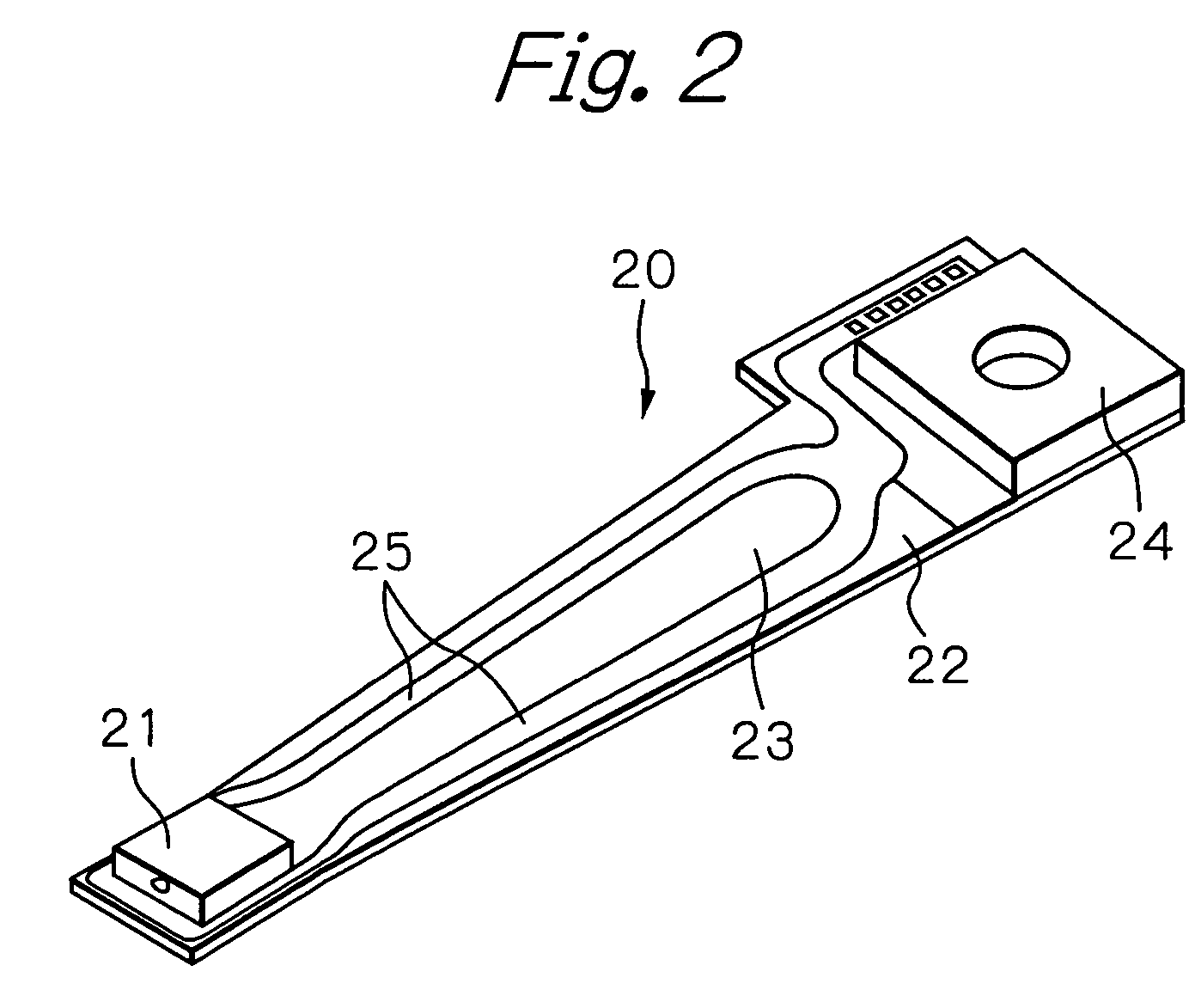Thin-film magnetic head having heatsink wider on air bearing surface side
a thin film, magnetic head technology, applied in the direction of magnetic recording, instruments, data recording, etc., can solve the problems of joule heat and heat caused by eddy current loss, heaters are at risk of melting, electrical resistance value of mr read head elements to change, etc., to avoid degradation of reading performance due to the increase in element temperature, the effect of high sensitivity to magnetic fields
- Summary
- Abstract
- Description
- Claims
- Application Information
AI Technical Summary
Benefits of technology
Problems solved by technology
Method used
Image
Examples
Embodiment Construction
[0044]FIG. 1 shows a perspective view schematically illustrating a structure of a main part of an embodiment of a magnetic disk drive apparatus according to the present invention, FIG. 2 shows a perspective view illustrating an embodiment of an HGA according to the present invention, and FIG. 3 shows a perspective view of an embodiment of a thin-film magnetic head (slider) provided on the end portion of the HGA.
[0045]In FIG. 1, reference numeral 10 indicates a plurality of magnetic disks rotating around a rotational axis of a spindle motor 11, 12 indicates an assembly carriage device for positioning a thin-film magnetic head (slider) on a track, and 13 indicates a recording / reproducing circuit for controlling read / write operations and heat operations of the thin-film magnetic head, respectively.
[0046]The assembly carriage device 12 is provided with a plurality of drive arms 14. These drive arms 14 are rotatable around a pivot bearing axis 16 by means of a voice coil motor (VCM) 15 a...
PUM
| Property | Measurement | Unit |
|---|---|---|
| thickness | aaaaa | aaaaa |
| thickness | aaaaa | aaaaa |
| thickness | aaaaa | aaaaa |
Abstract
Description
Claims
Application Information
 Login to View More
Login to View More - R&D
- Intellectual Property
- Life Sciences
- Materials
- Tech Scout
- Unparalleled Data Quality
- Higher Quality Content
- 60% Fewer Hallucinations
Browse by: Latest US Patents, China's latest patents, Technical Efficacy Thesaurus, Application Domain, Technology Topic, Popular Technical Reports.
© 2025 PatSnap. All rights reserved.Legal|Privacy policy|Modern Slavery Act Transparency Statement|Sitemap|About US| Contact US: help@patsnap.com



